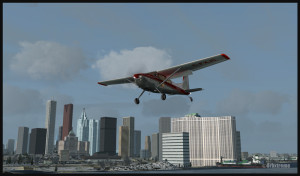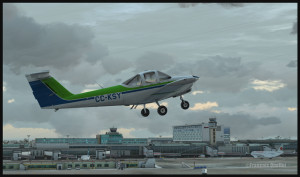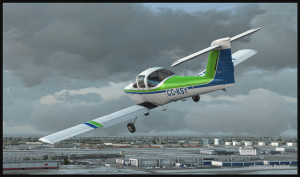Flight simulation allows the use of all company liveries and types of aircraft. In the present case, a DHC-8-227Q from Sat Airlines, with the Sakhalin Energy logo, has mysteriously found itself inbound for the Peyresourde mountain airfield.
Peyresourde Balestas is located in the Pyrenees, at an altitude of 1580 meters. Its runway is only 335 meters long and has a 15 degree slope. The beginning of the James Bond movie “Tomorrow never dies” has been filmed there. The runway is long enough to accommodate the DHC-8-227Q as the plane’s excellent braking capacity is even improved by the sloped runway. If you touch early enough, you won’t even have to apply full braking power.
A Dash 7, with its superb ability to operate from any kind of field, would also fit in there, providing the amount of fuel and cargo is well calculated. Because what lands must also takeoff.
The Peyresourde Balestas mountain airfield is made by LLH Créations, from France. The company has already produced four mountain airfields located in the French Alps. This is the first one in the Pyrenees.
Virtualcol FS Software created the Dash-8 used for this flight. For a very reasonable price, that company offers, in one bundle, an astonishing amount of liveries and all the types of DHC-8. Their product is detailed enough and really takes lower end computers into account when it comes to FPS (frames per second). Don’t expect the same realism as with the Q400 from Majestic Software though: Majestic’s Q400 is on a category by itself in the sim world and the price is adjusted accordingly.
The fun will not be over after you land. You will find that the takeoff is quite spectacular. Apply the brakes, full power and the necessary amount of flaps and let it go! You’ll see that the runway’s end is coming quickly and that you’re building speed like you never believed possible with a Dash 8!
Your passengers will certainly remember that mountain airfield. So will you!
If you want more ideas of flights that would test your nerves, just head to the “challenging virtual flight” section of this website.
For more articles on flight simulation on my web site, click on the following link : Flight simulation
















































